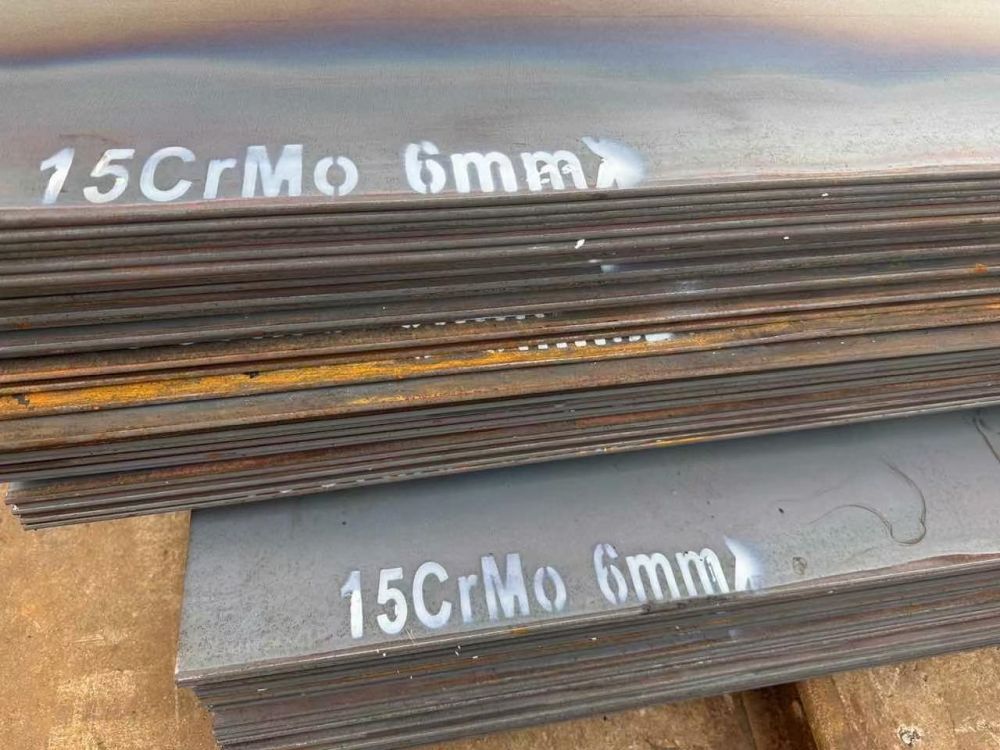Yes, carbon steel does rust when exposed to moisture and oxygen, as the iron content in carbon steel reacts with these elements to form iron oxide, commonly known as rust. However, rusting can be delayed or prevented through protective coatings, alloying, and regular maintenance.

Carbon steel is a type of steel that primarily consists of iron with added carbon, typically ranging from 0.03% to 2.0% by weight. Carbon steel’s mechanical properties, such as hardness, strength, ductility, and weldability, are significantly influenced by the amount of carbon present. Other elements may also be added to carbon steel in smaller quantities to modify its properties or enhance specific characteristics.
Here’s a scientific and accurate description of the composition of carbon steel:
Iron (Fe): Carbon steel is primarily composed of iron, accounting for more than 99% of its weight. Iron is a basic element that gives carbon steel its fundamental metallurgical properties.
Carbon (C): Carbon is the primary alloying element in carbon steel. It increases the hardness and strength of the steel but also affects its weldability and ductility. Carbon content is typically classified as low (0.03%-0.25%), medium (0.26%-0.60%), or high (0.61%-1.00%) depending on the desired properties.
Manganese (Mn): Manganese is added to carbon steel in small quantities, typically up to 1.6% by weight. It acts as an alloying element, increasing the strength and hardness of the steel. Manganese also improves the workability of carbon steel by reducing brittleness and facilitating hot rolling.
Silicon (Si): Silicon is another common element in carbon steel, present in amounts up to 1.0% by weight. It improves the strength and corrosion resistance of the steel. Silicon also enhances the deoxidization process during steelmaking, helping to remove harmful oxygen impurities.
Phosphorus (P): Phosphorus is typically present in carbon steel in small quantities, limited to 0.1% or less. While phosphorus can improve the machinability of steel, higher levels can have a negative impact on corrosion resistance and weldability.
Sulfur (S): Sulfur is another impurity element that is present in carbon steel in low concentrations, typically less than 0.05% by weight. It improves the machinability of steel by promoting the formation of a brittle layer on the surface during machining operations. However, higher sulfur content can also reduce the corrosion resistance and weldability of carbon steel.
In addition to these primary elements, carbon steel may also contain trace amounts of other elements such as chromium (Cr), nickel (Ni), copper (Cu), molybdenum (Mo), and others. These elements are added in very small quantities to enhance specific properties, such as corrosion resistance, heat resistance, or strength.
The exact composition of carbon steel can vary depending on the grade, type, and intended application. Manufacturers and standards organizations specify the allowed ranges for each element to ensure consistent and reliable performance of the steel.
| Carbon Steel Type | Carbon Content | Manganese Content | Phosphorus Content | Sulfur Content |
|---|---|---|---|---|
| Low Carbon Steel | 0.06% – 0.25% | 0.25% – 1.0% | ≤ 0.04% | ≤ 0.05% |
| Medium Carbon Steel | 0.26% – 0.60% | 0.30% – 0.90% | ≤ 0.04% | ≤ 0.05% |
| High Carbon Steel | 0.61% – 1.00% | 0.30% – 0.90% | ≤ 0.04% | ≤ 0.05% |
Carbon steel rusting is an electrochemical corrosion process. When carbon steel is exposed to a humid environment, such as the air contains moisture, its surface will form a thin film of water. This water film becomes an electrolyte, and the iron and a small amount of carbon in the carbon steel constitutes a primary cell.
During this process, iron is gradually corroded, forming loose iron oxide (i.e. rust). Carbon, on the other hand, acts as the cathode and receives the electrons released from iron without significant changes.
Environmental factors: A humid environment provides conditions for the formation of electrolytes, so carbon steel is more likely to rust where it is wet or in contact with water.
Oxygen supply: The presence of oxygen is necessary for the oxidation of iron, so poor ventilation or confined environments may accelerate the rusting process.
Impurity elements: Impurity elements such as phosphorus and sulphur in carbon steel can exacerbate the corrosion process.
Rusting of carbon steel is caused by the formation of a primary cell in a humid environment, where iron is oxidised as an anode. This process is influenced by ambient humidity, oxygen supply and impurity elements in the steel. Understanding the causes of rusting of carbon steel will help to take effective rust prevention measures such as painting and galvanising to extend the service life of carbon steel.
Coating protection: Coating the surface of carbon steel with anti-rust oil, galvanising, spraying paint, etc., to form a layer of protective film to isolate the contact of oxygen and moisture, thus slowing down the rusting process.
Cement coating: Although cement will absorb moisture, a protective layer will be formed on its surface, which can also play a role in rust prevention.
Waterproof measures: For carbon steel products that need to be in frequent contact with water, such as pipes, waterproof measures such as adding plastic film or rubber sleeves can be used to prevent rusting.
Avoid scratches: In the process of processing and using, avoid scratches or damages on the surface of carbon steel, because these damages may become the starting point of corrosion.
Regular maintenance: Carry out regular inspection and maintenance of carbon steel products, including cleaning, coating with anti-rust oil, etc., to ensure that their surfaces are always in good condition.
Through the comprehensive application of the above measures, the rusting of carbon steel can be effectively prevented and its service life can be extended.
If you found this article good, feel free to share it on your other social media platforms.
Copyright@2023 Huaxiao Metal Corporation Limited . All rights are reserved
WhatsApp us
Feel free to contact us!
If you need our products, please leave us a message with the specific specifications and quantity through the window on the right!
Reply within 24 hours